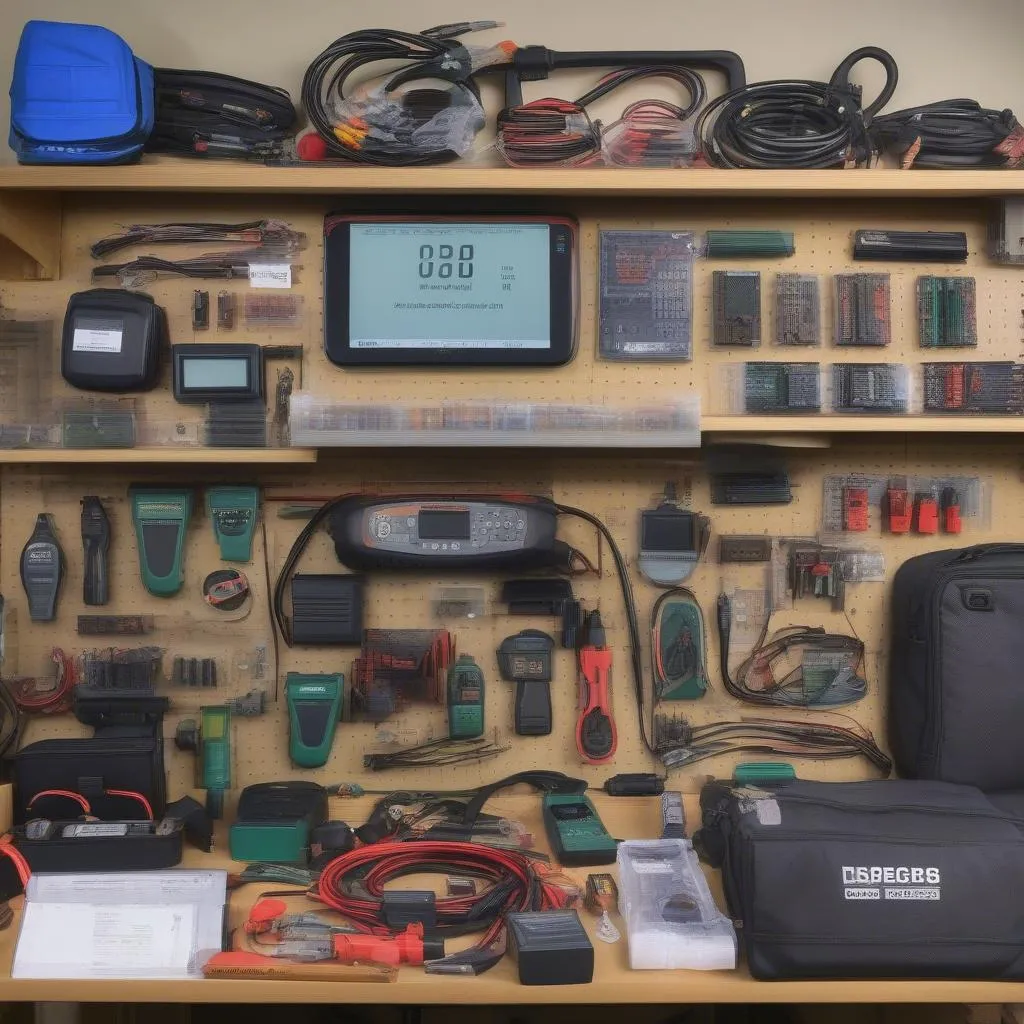The brake warning light on your dashboard is a crucial safety feature, designed to illuminate whenever there’s an issue with your Chevrolet S-10’s braking system. While it’s normal for the light to momentarily turn on when starting your truck, a persistent glow indicates a problem that needs immediate attention.
Ignoring a lingering brake warning light can lead to hazardous driving conditions and potentially put you and others at risk. This comprehensive guide will walk you through the common causes of a persistent brake warning light on your S-10, empowering you to diagnose and potentially fix the issue.
Common Culprits Behind a Persistent Brake Warning Light
Before diving into the specifics, it’s crucial to understand that a constantly illuminated brake warning light doesn’t automatically signal a catastrophic failure. Several factors, ranging from minor to serious, could be the root cause. Let’s explore the most common culprits:
1. Low Brake Fluid Level: The Primary Suspect
More often than not, a persistently illuminated brake warning light on your S-10 stems from a low brake fluid level. This vital fluid transmits the force you apply to the brake pedal, activating the calipers and bringing your truck to a halt. When the fluid level drops below a safe threshold, the warning light acts as an early alert system.
What to do: Park your S-10 on a level surface, pop open the hood, and locate the brake fluid reservoir. It’s typically a translucent plastic container with a black cap, situated on the driver’s side of the engine bay. Check the fluid level against the “Min” and “Max” markings on the reservoir.
If the fluid level is indeed low, carefully top it off with the correct type of brake fluid, as specified in your owner’s manual. However, simply adding fluid is rarely the complete solution. It’s imperative to investigate the reason behind the fluid loss, as it could indicate a leak in the system, a worn-out brake component, or another underlying issue.
2. Worn-Out Brake Pads: A Silent Threat
Brake pads are designed to wear down over time. As you apply the brakes, friction between the pads and rotors generates the stopping force. This constant friction eventually wears down the friction material on the brake pads. When the pad material thins beyond a safe limit, a small metal tab, often called a “wear indicator,” comes into contact with the rotor, triggering the brake warning light.
What to do: If you suspect your brake pads are nearing the end of their lifespan, it’s time for an inspection. You can visually check the pads yourself by looking through the spaces between the wheel spokes. If you see less than ¼ inch of friction material remaining on the pads, it’s a clear sign they need replacement.
Remember that timely brake pad replacement is crucial. Driving with worn-out pads not only diminishes your braking performance but can also lead to costly damage to other brake components, such as the rotors.
3. Faulty Brake Light Switch: An Often Overlooked Culprit
While less common than low brake fluid or worn brake pads, a malfunctioning brake light switch can also cause the brake warning light to stay on. This switch, typically located above the brake pedal arm under the dashboard, plays a dual role. It not only activates your brake lights when you press the pedal but also sends a signal to the brake warning light system.
What to do: If you’ve ruled out low brake fluid and worn brake pads as the culprits, the brake light switch becomes a prime suspect. Testing it typically requires basic mechanical skills and a multimeter. However, if you’re not comfortable working with electrical components, it’s best to leave this task to a qualified mechanic.
A faulty brake light switch often manifests as erratic brake light behavior, such as the lights staying on even when the pedal is released. If you notice this symptom along with a persistent brake warning light, there’s a strong chance the switch is the culprit.
4. ABS Issues: A More Complex Scenario
Modern Chevrolet S-10 models are equipped with Anti-lock Braking Systems (ABS). This advanced safety feature prevents wheel lockup during hard braking, helping you maintain steering control. The ABS system relies on various sensors and components, and a fault within this system can trigger the brake warning light.
What to do: Diagnosing ABS issues often requires specialized diagnostic tools and expertise. If you suspect an ABS problem, it’s best to consult a qualified mechanic. They can retrieve diagnostic trouble codes from your S-10’s computer system, pinpointing the root cause of the issue.
Conclusion
A persistent brake warning light on your Chevrolet S-10 is a serious matter that deserves your immediate attention. While the most common culprits are often easily remedied, like low brake fluid or worn brake pads, more complex issues like a faulty brake light switch or ABS problems require professional attention.
Remember, neglecting your S-10’s braking system is never worth the risk. If you’re unsure about diagnosing or fixing the issue yourself, don’t hesitate to seek assistance from a qualified mechanic.

